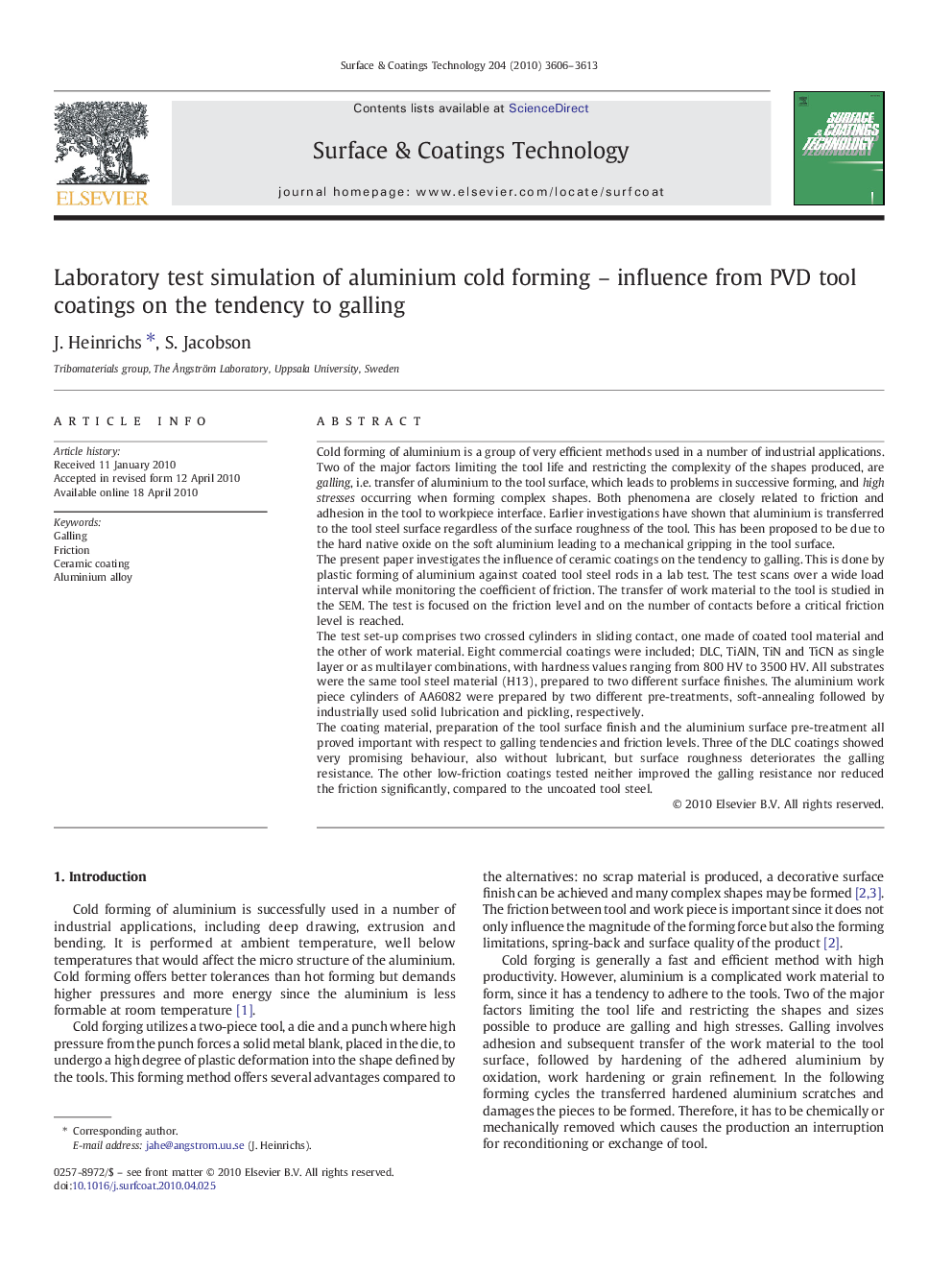| Article ID | Journal | Published Year | Pages | File Type |
|---|---|---|---|---|
| 1659161 | Surface and Coatings Technology | 2010 | 8 Pages |
Cold forming of aluminium is a group of very efficient methods used in a number of industrial applications. Two of the major factors limiting the tool life and restricting the complexity of the shapes produced, are galling, i.e. transfer of aluminium to the tool surface, which leads to problems in successive forming, and high stresses occurring when forming complex shapes. Both phenomena are closely related to friction and adhesion in the tool to workpiece interface. Earlier investigations have shown that aluminium is transferred to the tool steel surface regardless of the surface roughness of the tool. This has been proposed to be due to the hard native oxide on the soft aluminium leading to a mechanical gripping in the tool surface.The present paper investigates the influence of ceramic coatings on the tendency to galling. This is done by plastic forming of aluminium against coated tool steel rods in a lab test. The test scans over a wide load interval while monitoring the coefficient of friction. The transfer of work material to the tool is studied in the SEM. The test is focused on the friction level and on the number of contacts before a critical friction level is reached.The test set-up comprises two crossed cylinders in sliding contact, one made of coated tool material and the other of work material. Eight commercial coatings were included; DLC, TiAlN, TiN and TiCN as single layer or as multilayer combinations, with hardness values ranging from 800 HV to 3500 HV. All substrates were the same tool steel material (H13), prepared to two different surface finishes. The aluminium work piece cylinders of AA6082 were prepared by two different pre-treatments, soft-annealing followed by industrially used solid lubrication and pickling, respectively.The coating material, preparation of the tool surface finish and the aluminium surface pre-treatment all proved important with respect to galling tendencies and friction levels. Three of the DLC coatings showed very promising behaviour, also without lubricant, but surface roughness deteriorates the galling resistance. The other low-friction coatings tested neither improved the galling resistance nor reduced the friction significantly, compared to the uncoated tool steel.
